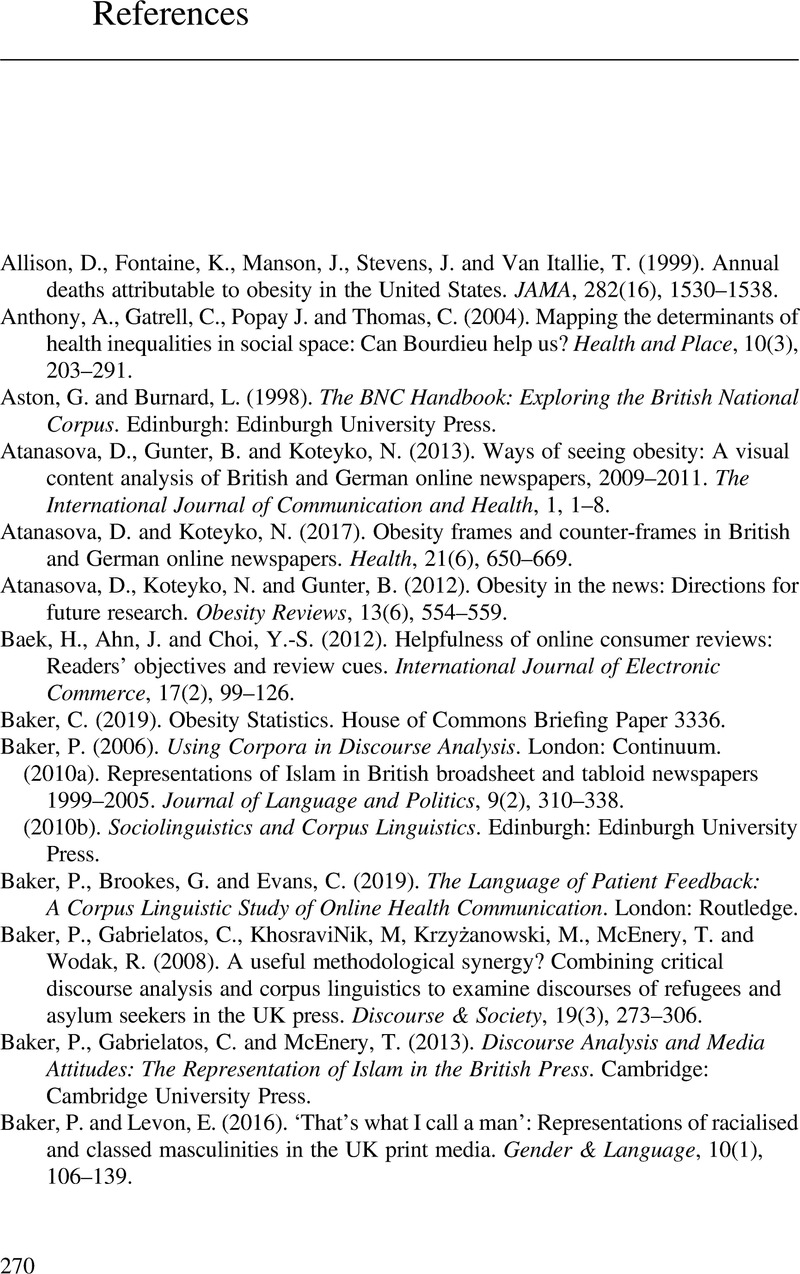Book contents
- Obesity in the News
- Obesity in the News
- Copyright page
- Contents
- Figures
- Tables
- Acknowledgements
- 1 Introduction
- 2 The Way In
- 3 Studying Difference
- 4 Change over Time
- 5 Shaming and Reclaiming
- 6 Healthy Body
- 7 Gendered Discourses of Obesity
- 8 ‘A Disease of the Poor’? Obesity and Social Class
- 9 Going ‘Below-the-Line’
- 10 Conclusion
- References
- Index
- References
References
Published online by Cambridge University Press: 16 November 2021
- Obesity in the News
- Obesity in the News
- Copyright page
- Contents
- Figures
- Tables
- Acknowledgements
- 1 Introduction
- 2 The Way In
- 3 Studying Difference
- 4 Change over Time
- 5 Shaming and Reclaiming
- 6 Healthy Body
- 7 Gendered Discourses of Obesity
- 8 ‘A Disease of the Poor’? Obesity and Social Class
- 9 Going ‘Below-the-Line’
- 10 Conclusion
- References
- Index
- References
Summary

- Type
- Chapter
- Information
- Obesity in the NewsLanguage and Representation in the Press, pp. 270 - 282Publisher: Cambridge University PressPrint publication year: 2021

